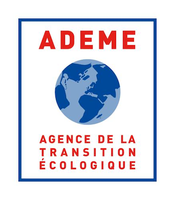Search eceee proceedings
Potential of micro mobility to reduce car trips and greenhouse gas emissions
Panel: 6. Energy-efficient and low-carbon mobility for all
Authors:
Laura Gebhardt, German Aerospace Center (DLR), Germany
Mascha Brost, Institut of Vehicle Concepts, Germany
Simone Ehrenberger, Institut of Vehicle Concepts, Germany
Abstract
The targeted climate goals and also the reduction of emissions of noise, pollutants and local heat can only be achieved with a worldwide change in transport behavior, supported by technological progress and fundamental changes in vehicle concepts. One contribution to reducing greenhouse gas emissions may be made by using very small and light electric vehicles (LEV).
These efficient vehicles have a favorable ratio of vehicle weight to payload (passengers or goods), and in addition to low vehicle weight, the most efficient use of electricity for propulsion contributes to environmental sustainability regarding vehicle operation. As with electrically powered passenger cars, local emissions from a combustion process are eliminated. In contrast to the large and heavy passenger cars, however, the traction batteries in LEVs could be considerably smaller, so that the consumption of critical raw materials is also reduced, thus lowering also production-related greenhouse gas emissions.
In order to quantify the theoretical potential of emission reduction, we want to present an interdisciplinary study that was carried out to determine what proportion of the trips currently made by car could, in purely theoretical terms, be covered by small and light electric vehicles (LEVs). We present a scenario, in which a major modal shift away from trips with full-sized passenger cars to LEVs has taken place. This analysis assumes today’s patterns of mobility are maintained, but using full sized cars only for those few trips which are very long or include many occupants. The work employs Germany as a case study for potential savings, given the national importance of cars as both a means of mobility and an economic sector.
In order to determine the proportion of trips made today by car that could theoretically be made by LEVs, the national household survey MID 2017 was analyzed. We use the characteristics of vehicles (e.g. speed, range, number of seats) and trips (e.g. distance) to determine which trips may be conducted in LEVs, and thus derive a total for substitutable car kilometers. Many different types of vehicles, from e-scooters, cargo bikes and pedelecs to three- and four-wheeled light electric vehicles, are considered. Together with an assessment of greenhouse gas emissions per vehicle kilometer for both LEVs and the replaced vehicles (considering production via life cycle analyses and energy for vehicle use), a theoretical, calculative potential of greenhouse gas emissions savings is derived for Germany.
The results of the analyses show that 75% of all car trips and 50% of car mileage could theoretically be substituted by one of the LEVs considered. Regarding the CO2eq saving potential an overall saving of 44% of entire car emissions can be assumed. This is equivalent to a reduction of 57 Mio tonnes CO2eq per year.
Downloads
Download this presentation as pdf: 6-201-22_Gebhardt_pres.pdf
Panels of
1. Dynamics of consumption: less is more?
2. Efficiency and beyond: innovative energy demand policies
3. Policy, finance and governance
4. Monitoring and evaluation for a wise, just and inclusive transition
5. Towards sustainable and resilient communities
6. Energy-efficient and low-carbon mobility for all
7. Policies and programmes for better buildings
8. Innovations in products, systems and building technologies



























